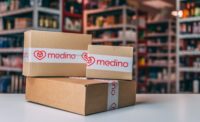Bake Sustainability into the Scale-Up Strategy

As with many influential trends in food manufacturing, the sustainability movement didn’t exactly originate with the biggest brands. It was a movement that grew up and out of smaller companies that prioritized environmental responsibility in catering to niche consumer preferences. Now, sustainability features prominently in the brand promises and cost saving strategies made by food manufacturers of all sizes.
Even amid the evolution of greener packaging technologies, sustainability is a complicated matter to navigate—especially for smaller food manufacturers that lack the resources and experts employed by much larger competitors. So, how does a budding food manufacturer looking to scale up from a retail or small production operation begin to tackle sustainability amid other growing pains and priorities? Three packaging professionals provide their advice for an environmentally responsible scale-up strategy.
Fight Waste and Streamline Logistics
Tom Egan, vice president, Industry Services, PMMI, The Association of Packaging and Processing Technologies
When trying to sustainably scale up, it is critical to understand that well-intended measures can generate fully-costed waste and actually harm both your bottom line and the environment. Fully-costed waste is the waste resulting from product that has been manufactured, packaged and distributed without ever being sold and consumed. While it can be tempting to always minimize material in an effort to reduce environmental impact, food manufacturers must remember that material plays an increasing important role as distribution chains grow.
For example, a new company may start by manufacturing and distributing biscuits to local retailers within 50 miles. That distance may constitute using a simple overwrap without any sophisticated barrier technologies to preserve freshness because both the travel distance and the product lifecycle are short. As the company grows, it expands to supply retailers on a regional level, extending the distribution chain and requiring freshness for three-to-four days. The team may need to redesign that primary package, implementing the right features that will keep the biscuits moist and fresh for a longer period.
Efficient logistics is another important consideration. Using the shortest routes to guide your production chain can reduce the need for dunnage and extra protective materials as well as energy and fuel consumption. This approach can also minimize handling by additional parties, which can trim back chances for product damage.
Break Sustainability into Steps
Charles Murray, CEO of PPi Technologies Group (PPitg)
Being in the unique position of a company that both supplies pouch and tray machinery and produces wellness products, PPi Technologies Group crafted a simple checklist to navigate the assorted complexities of environmental responsibility. If your manufacturing operation is scaling up, remember SECAMP. SECAMP stands for Sustainability, Environment, Conscious, Approach, Machine, Pouch. Each word is tied to a different type of consideration that contributes to a sound sustainability strategy.
Sustainability should prompt you to consider compliance with the ordinances of local governing agencies. How these bodies manage matters of environmental regulation, waste disposal and recycling will ultimately determine the parameters of your company’s strategy. Environment refers to understanding the true environmental impact of your supply chain. Can your package be incinerated, which generates energy and produces the byproduct of slag that helps to reinforce certain metals used in construction? A solid sustainability strategy should offer a minimal environmental footprint when all aspects of the supply chain—from sourcing to disposal—are considered.
Conscious focuses on the consequences and impact of the supply chain output. Even when your company aims to minimize its environmental footprint, there may be unforeseen consequences to your choices. Know what those are and continue working to minimize them. Approach encompasses the full scope of measures necessary to implement your sustainability strategy. What new equipment, personnel, workforce training or consumer-targeted education is required? Machine prompts you to make sure that your equipment supports efficiency and energy savings. And lastly, Pouch invites you to consider all design decisions around your packaging format. Does your packaging vision involve a paper label and tray, which require added steps in recycling? Is it digitally printed, which requires less energy? Knowing the details will help you round out a true assessment of your company’s environmental impact as you grow.
Perfect What’s Inside the Box by Thinking Outside the Box
Uwe Boss, COO, HelloFresh
Packaging may not be the big draw for our customers at HelloFresh, but it certainly serves a critical function: preserving and protecting the food. Ultimately, our packaging helps us to assure the quality, freshness and safety consumers expect each time they unbox our ingredients. We would not be able to reach customers as far and wide, and over different temperature zones without it.
HelloFresh has significantly reduced food waste since our inception. We have a tight supply chain, where our teams source directly from growers to our distribution centers, portion, package and distribute to customers. Having fewer intermediaries allows us to be faster and fresher with no food waste, which is better for customers and producers.
And while we always aim to use packaging material minimally and efficiently, it is one of our best weapons against food waste. There are plenty of corrugated boxes to choose from, but the perfect insulation material - liners and ice packs - were much more challenging to find. The liner is a high-value component necessary to preserve the food. Early on, we had no industry standard or playbook to follow. As a result, we had to explore suppliers outside of our domain, remain agile and complete much in-house testing to get it right. Now, more suppliers have entered the space, creating a wider variety of options, but the experience taught our team how to navigate these challenges by always keeping an eye out for new solutions.
HelloFresh's customer-centric ethos shapes our approach as we continue to make greater strides in sustainability. These measures include leveraging more efficient materials and rightsizing our box. We also have a partnership with Cascade in place to bring to our consumers a corrugated liner solution that is curbside recyclable. We are incredibly proud of our models, which minimize food waste from levels of 30-40 percent to single digit measurements. Not only does each step toward greater sustainability lead to a better consumer experience, but also a better future for us all.
Food manufacturers aiming to scale up operations with a focus on sustainability can find a wide range of solutions and expertise at PACK EXPO East 2018 (April 16-18; Philadelphia, PA). Attendees at PACK EXPO East will be able to explore the latest technologies from 400 suppliers of packaging equipment, components, materials and containers for a wide range of food applications. The three-day show provides attendees with the opportunity to exchange ideas with 6,000 peers, yet the intimacy of a regional event and the show’s more focused approach allows attendees and exhibitors to easily pinpoint solutions and spend quality time understanding each other’s operations and the challenges both sides of the table face.To learn more or register, visit packexpoeast.com.
Looking for a reprint of this article?
From high-res PDFs to custom plaques, order your copy today!






